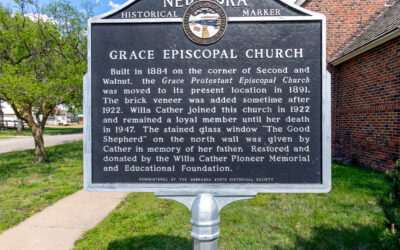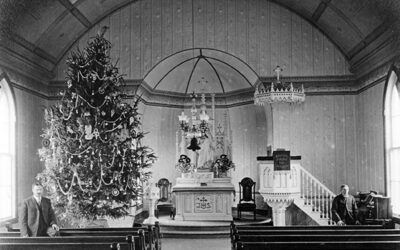By Rob Bozell, (former) Nebraska State Archeologist
Ash Hollow State Historical Park is not only one of the most picturesque of Nebraska’s public parks but it and surrounding areas are home to a diverse and important set of archeological resources spanning at least ten thousand years. The Ash Hollow ‘locality’ contains the full spectrum of examples of the North Platte valley’s exciting and important archeological record that help to interpret human adaptation in this rugged yet visually stunning landscape. The archeology of the region is discussed in a recent NET video about Nebraska’s State Historical Parks (Adventures in History: Discovering Nebraska’s State Historical Parks | Nebraska Public Media ).
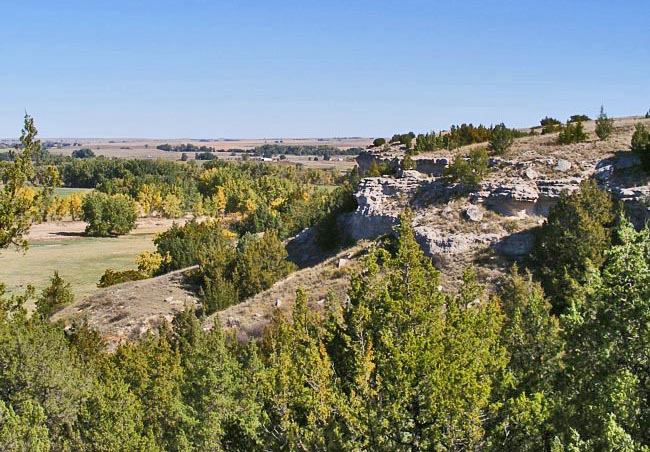
Ash Hollow Cave area and the North Platte River valley.
Paleoindian Bison Hunting
Several sites dating to the Paleoindian period have been the focus of excavations near Ash Hollow (Hill et al. 2005, 2011; Myers et al. 1981). These are some of the oldest sites in Nebraska and date to about ten thousand years ago. Nomadic hunters camped and butchered bison and processed hides at these sites. High-utility carcass portions were carried from nearby kill sites and then butchered including fracturing of the bone for marrow extraction. Numerous stone butchering tools and spearpoints were discovered. Natural springs are near these sites which were attractive to both animals and humans.
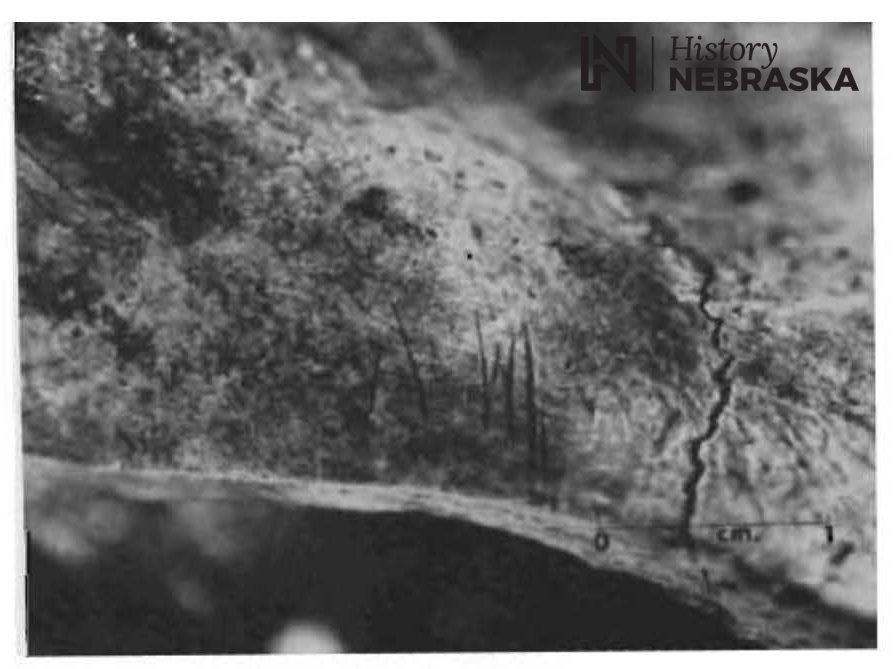
Stone knife butchering marks on ancient bison bone.
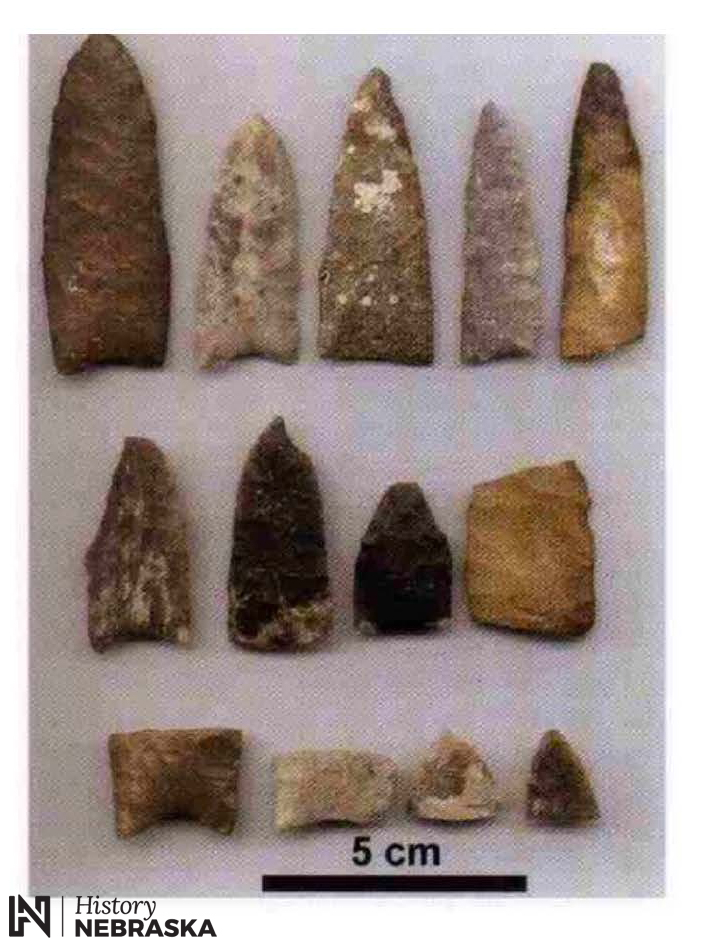
Ten-thousand-year-old spearpoints from a bison butchering site.
Butte Top Habitations
A unique feature of the North Platte valley landscape are flat-topped rocky buttes sculpted by millennia of wind and water erosion (Forbis 1985; LaBelle and Scoggin 2016). These buttes offer commanding game-watching views of the valley and also potentially served as defensive positions during periods of conflict. Evidence of Indigenous occupation of these buttes extends back at least six thousand years ago. Excavations at butte top camps produce large amounts of animal bones, charred vegetal foods, stone tools, broken ceramic pots, fireplaces, and even small cistern-like features cut or eroded into the rock — a convenient method of catching rainwater.
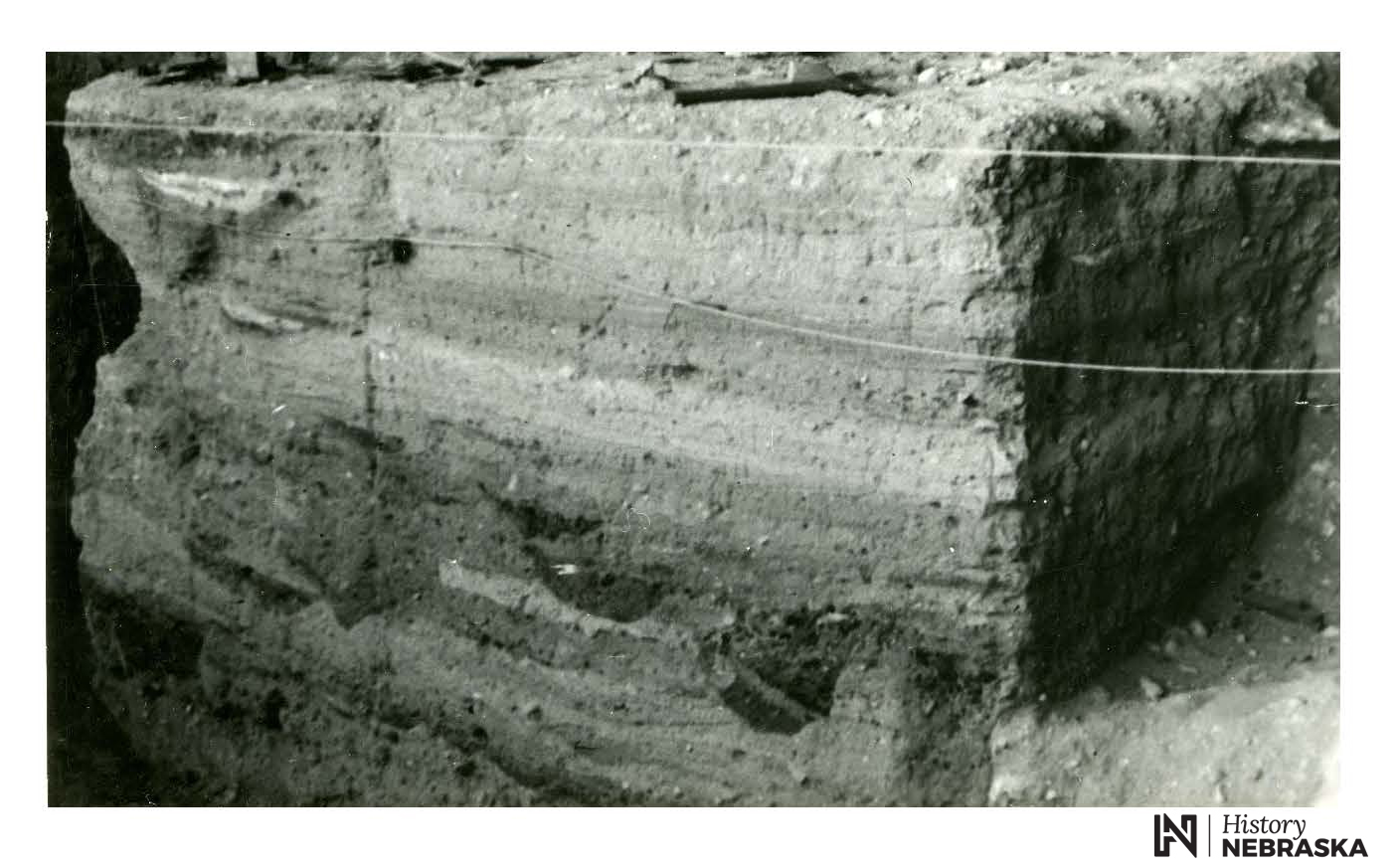
Interior of Ash Hollow Cave showing ancient fireplaces (white and dark basin-shaped features) spanning two thousand years.
Ash Hollow Cave
One of the most important Indigenous archeological sites on the High Plains is Ash Hollow Cave (Champe 1946). This prominent rockshelter (not a true cave) was excavated by History Nebraska in 1939 and is in the state park. The shelter contains the stratified layers of multiple camps dating from over two thousand years ago to the four hundred years ago. The later occupations were by ancestors of the Pawnee and Apache. The investigation in part laid the groundwork for establishing the sequence of pre-Euroamerican contact Indigenous groups living in western Nebraska. A building was constructed over the excavations when the park was developed and visitors can walk down into the shelter and see many of the recovered artifacts.
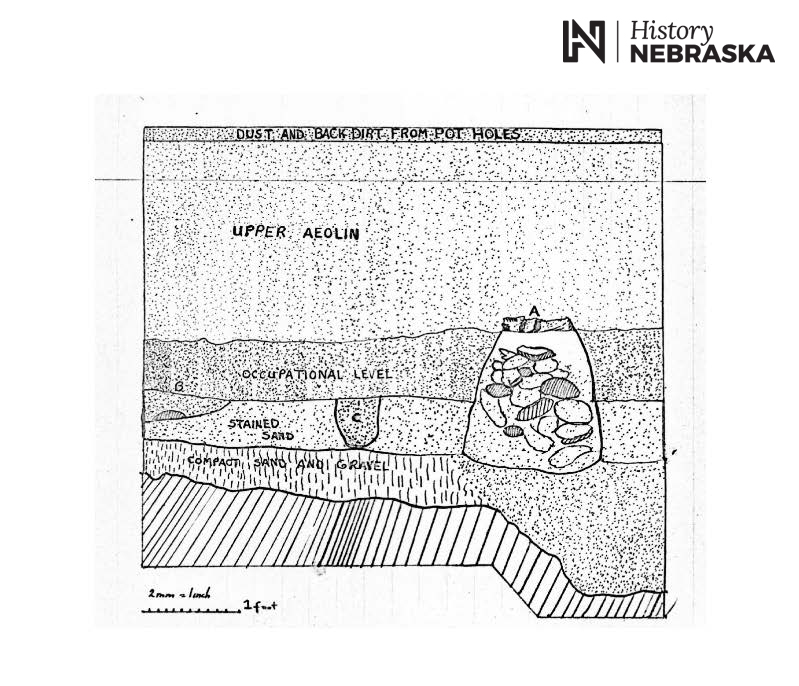
Original 1939 fieldnote drawing from a butte top excavation depicting Indigenous roasting pit.
Emigrant Trails, Graves, and Trading Posts
From an archeological perspective, understanding mid-nineteenth century American westward expansion is captured through the study of wagon trails and related graves, stage stations and posts. Ash Hollow possesses important and remarkably well-preserved remnants of this period of the historic American West. Deep wagon trail ruts are visible throughout the park including the spectacular Windlass Hill. This hill features major ruts descending a steep grade into the North Platte valley from an upland segment of the trail. A little-known trading post along the trail has been explored through archeological excavation providing a glimpse into life along the arduous journey westward. Several graves are known along this segment of the trails including Rachel Pattison who died of cholera in her late teens in 1849.

Oregon Trail wagon ruts.
References Cited
Champe, John L.
1946 Ash Hollow Cave: A Study of Stratigraphic Sequence in the Central Great Plains. University of Nebraska Studies, New Series 1. Lincoln.
Forbis, Richard G.
1985 The McKean Complex as Seen from Signal Butte. In, McKean/Middle Plains Archaic: Current Research, edited by Marcel Kornfeld and Lawrence C. Todd, pp 21-29. Occasional Papers on Wyoming Archeology 4. Office of the Wyoming State Archeologist, Laramie.
Hill, Mathew G., David W. May, and David J. Rapson
2005 Late Paleoindian (Allen/Frederick Complex) Subsistence Activities at the Clary Ranch Site, Ash Hollow, Garden County, Nebraska. Plains Anthropologist 50:249-263.
Hill, Mathew G., and David J. Rapson, Thomas J. Loebel, and David W. May
2011 Site Structure and Activity Organization at a Late Paleoindian Base Camp in Western Nebraska. American Antiquity 76(4):752-772.
LaBelle, Jason M. and William E. Scoggin
2016 “Chili” Scoggin and the Early Exploration of the Barn Butte Site (25GD1), Western Nebraska. Central Plains Archaeology 15:89-108.
Myers, Thomas P., R. George Corner, and Lloyd G. Tanner
1981 Preliminary Report on the 1979 Excavations at the Clary Ranch Site. Transactions of the Nebraska Academy of Sciences IX:1-7.


